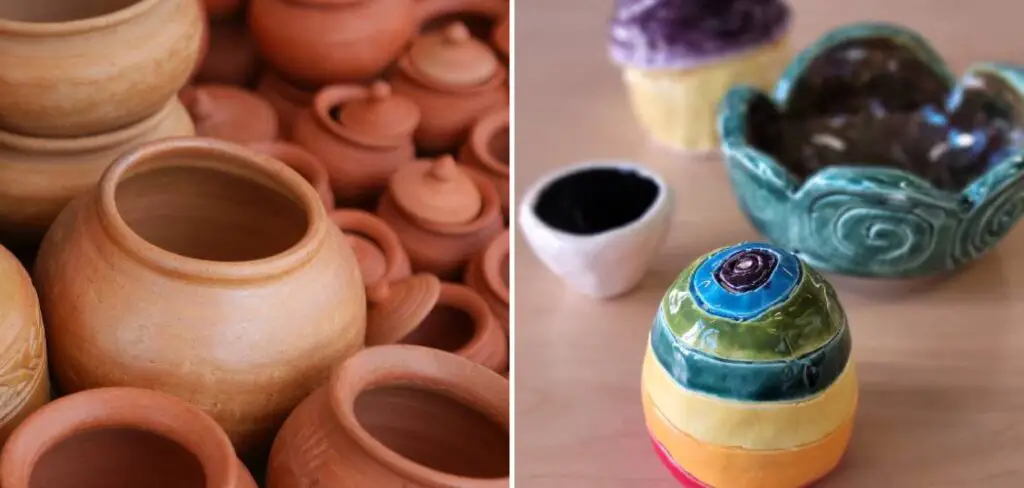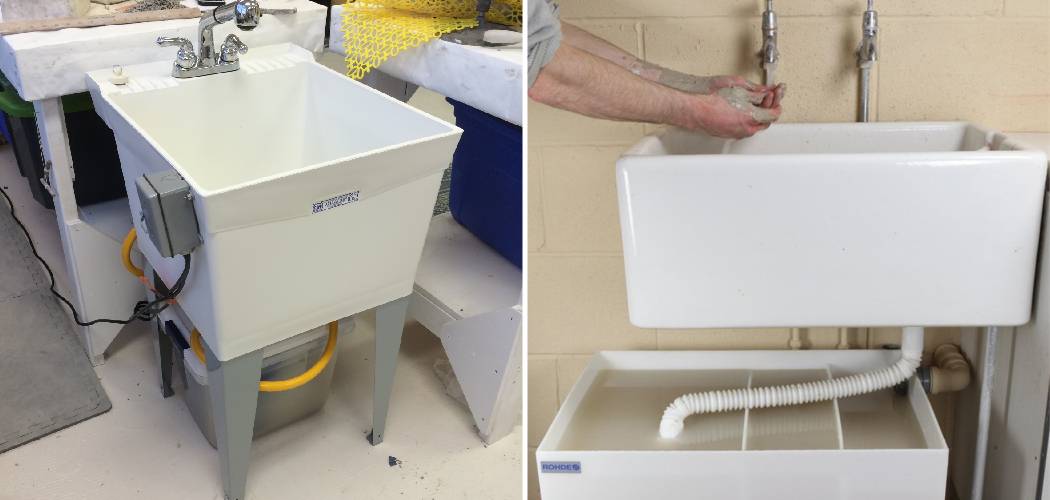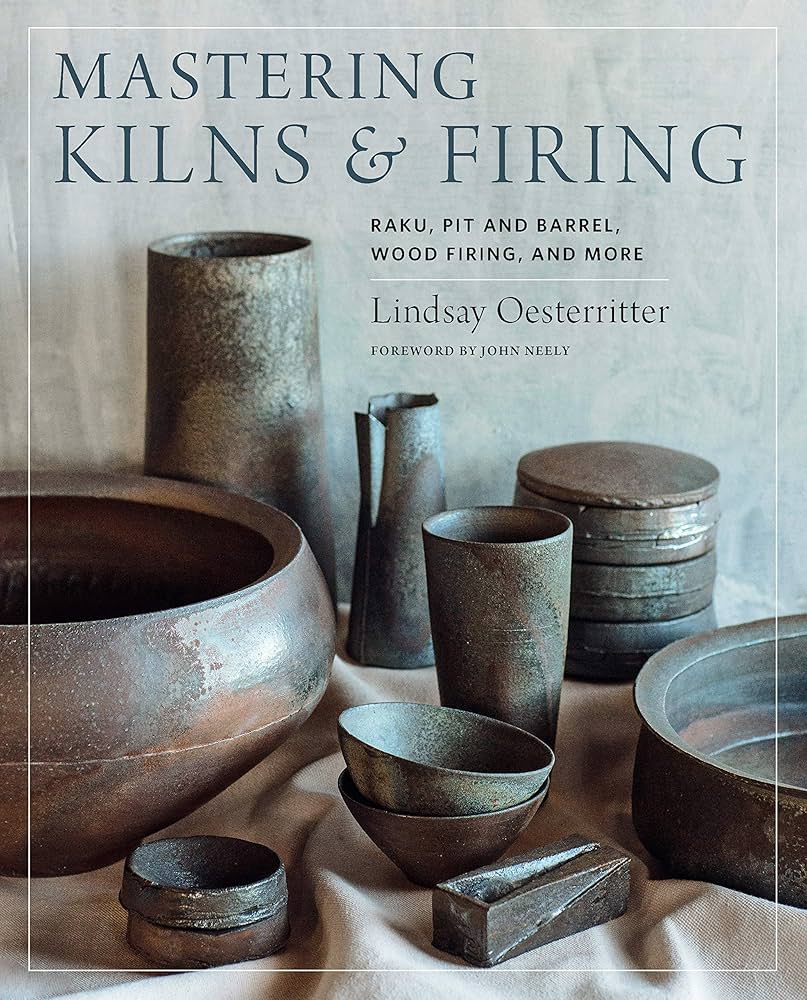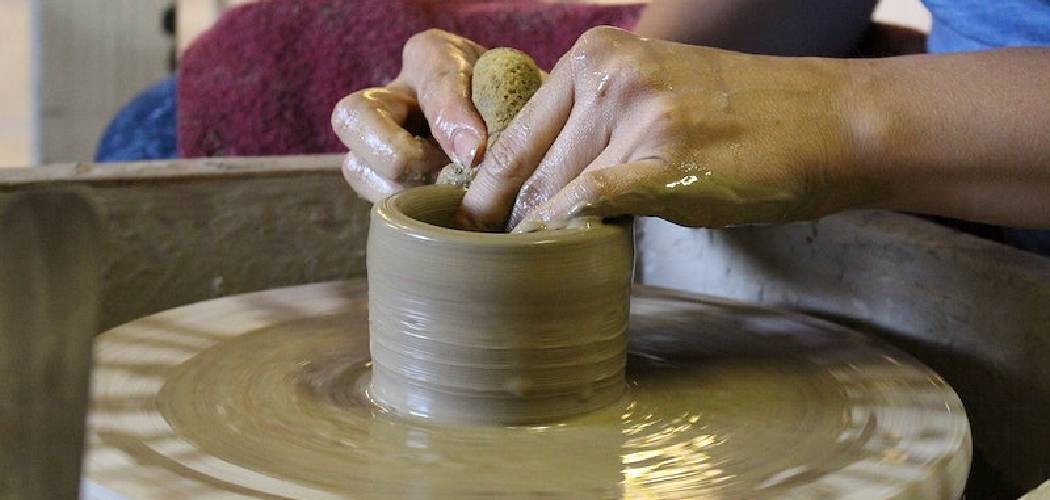Oxidation firing uses ample oxygen, resulting in bright and clear glaze colors. Reduction firing limits oxygen, creating richer and varied hues.
Oxidation and reduction firing are essential techniques in ceramics. They significantly impact the final appearance of pottery. Oxidation firing involves plenty of oxygen, which ensures consistent and predictable results. This method is ideal for achieving bright and clear glaze colors.
Reduction firing, on the other hand, restricts oxygen. This limited oxygen environment creates unique and varied hues, often producing richer and deeper colors. Both techniques require skill and precision. Understanding these methods allows ceramic artists to achieve their desired aesthetic effects. Each firing method offers distinct advantages, making them valuable in the world of ceramics. This guide explores the key aspects of the difference between oxidation and reduction firing.
Table of Contents

Credit: www.youtube.com
Introduction To Firing Techniques
Firing techniques are essential in the world of ceramics. These techniques determine the final look and quality of ceramic pieces. Two main methods are oxidation and reduction firing. Each has unique effects on the clay and glaze.
Importance In Ceramics
Firing techniques play a significant role in ceramics. They influence the color, texture, and durability of the final product. Understanding these techniques helps create desired effects in pottery.
Basic Concepts
The process of firing transforms clay into ceramics. This involves heating the clay to high temperatures. There are two main types of firing: oxidation and reduction.
| Oxidation Firing | Reduction Firing |
|---|---|
|
|
Oxidation firing occurs in an oxygen-rich environment. This method produces bright and vibrant colors. It is often used in electric kilns.
Reduction firing happens in a low-oxygen environment. This method results in richer, deeper colors. It is typically used in gas kilns.
Oxidation Firing
Oxidation firing is a common technique in ceramics. It involves firing clay objects in the presence of oxygen. This process impacts the final color and texture of the ceramics.
Process Overview
In oxidation firing, the kiln is filled with air. This means there is plenty of oxygen available. The oxygen interacts with the materials in the clay and glaze. This interaction affects the outcome of the fired piece.
The kiln temperature is carefully controlled. This ensures even heating throughout. The process can take several hours. The duration depends on the type and size of the ceramic piece.
Common Materials Used
Many materials are used in oxidation firing. Some of the most common include:
- Clay bodies: These are the base materials for ceramics. They can be earthenware, stoneware, or porcelain.
- Glazes: These are coatings applied to the clay. They can be made from various minerals and oxides.
- Colorants: These are added to glazes to produce colors. Examples include iron oxide, cobalt oxide, and copper carbonate.
These materials react differently in the presence of oxygen. This results in a wide range of colors and finishes. Below is a table summarizing common materials and their typical results in oxidation firing:
| Material | Typical Result |
|---|---|
| Iron Oxide | Produces red or brown colors |
| Cobalt Oxide | Produces blue colors |
| Copper Carbonate | Produces green or turquoise colors |
Understanding these materials helps artists achieve their desired results. Experimentation is key to mastering oxidation firing. Each material’s reaction can vary based on the specific conditions of the firing process.
Reduction Firing
Reduction firing is a fascinating technique in the world of ceramics. This method involves creating a specific atmosphere in the kiln to achieve unique results. The process can significantly alter the appearance and properties of the final product.
Process Overview
Reduction firing involves limiting the amount of oxygen in the kiln. This creates a reducing atmosphere. Potters achieve this by controlling the fuel and airflow. The lack of oxygen causes the metal oxides in the glaze to change color. This can result in vibrant and varied finishes. Temperatures often range from 1,800°F to 2,400°F during reduction firing. The process requires careful monitoring to ensure the desired effects.
Common Materials Used
Various materials can be used during reduction firing. These include:
- Copper – Produces red or green hues.
- Iron – Results in a range of browns and blacks.
- Cobalt – Yields deep blue shades.
- Rutile – Offers a variety of colors including golds and purples.
Potters often use different clay bodies to achieve specific results. Stoneware and porcelain are popular choices for reduction firing. Each clay type reacts differently in a reduction atmosphere. This allows for endless creative possibilities.
Chemical Reactions
Understanding the chemical reactions in oxidation and reduction firing is crucial. These reactions affect the final look and feel of ceramics. Let’s dive into the specifics of each type of reaction.
Oxidation Reactions
In an oxidation reaction, the kiln atmosphere has plenty of oxygen. This oxygen combines with the materials in the clay and glaze.
- Oxygen is abundant
- Metals in the glaze form metal oxides
- Colors are often bright and clear
The presence of oxygen encourages the formation of metal oxides. These oxides influence the final color of the ceramic piece.
Reduction Reactions
A reduction reaction happens in a low-oxygen environment. The kiln atmosphere has very little oxygen.
- Oxygen is scarce
- Metals in the glaze form different compounds
- Colors are often darker and richer
In this setting, metals in the clay and glaze react differently. This results in unique and often more complex colors.
| Type of Reaction | Atmosphere | Color Outcome |
|---|---|---|
| Oxidation | Oxygen-rich | Bright and clear |
| Reduction | Oxygen-poor | Darker and richer |
Visual Differences
Understanding the visual differences between oxidation and reduction firing can enhance your pottery skills. These differences impact the final look of your ceramics.
Color Variations
Oxidation firing typically results in bright, vibrant colors. This is due to the ample oxygen present during the process. Common colors include:
- Bright reds
- Vivid blues
- Soft pastels
Reduction firing often produces more earthy and muted tones. This happens because oxygen is limited, affecting the metal oxides in the glaze. Expect to see:
- Deep reds
- Rich browns
- Muted greens
Surface Textures
The surface texture of your pottery can also differ significantly.
| Firing Type | Surface Texture |
|---|---|
| Oxidation | Smooth and glossy |
| Reduction | Varied and matte |
Oxidation-fired pieces often have a smooth, even texture. The ample oxygen helps to achieve a glossy finish.
Reduction-fired pieces may have a more varied texture. The limited oxygen can create a matte or even rough surface.
These visual differences are key to achieving your desired pottery aesthetic. Experimenting with both firing methods can help you find your unique style.

Credit: ceramicartsnetwork.org
Applications In Pottery
Understanding oxidation and reduction firing is vital for potters. Each method creates different effects on pottery. These effects are seen in functional and decorative pottery. Let’s explore how each firing method impacts these two types of pottery.
Functional Pottery
Functional pottery includes items like bowls, mugs, and plates. These items need to be durable and safe for use. Oxidation firing is often used for functional pottery. This method provides a controlled environment. Potters can achieve consistent and reliable results. Items become strong and less likely to crack.
Reduction firing can also be used for functional pottery. This method creates unique colors and textures. However, it can be less predictable. Potters need to ensure that functional pieces are still safe to use. Reduction-fired items may have a rustic appearance.
| Oxidation Firing | Reduction Firing |
|---|---|
| Controlled atmosphere | Less predictable |
| Consistent results | Unique colors |
| High durability | Rustic appearance |
Decorative Pottery
Decorative pottery includes vases, sculptures, and wall art. These items prioritize aesthetics over functionality. Reduction firing is popular for decorative pottery. This method creates stunning visual effects. Colors can range from deep reds to rich blues. Textures can be varied and interesting.
Oxidation firing can also be used for decorative items. It provides a clean and bright finish. Glazes and underglazes can appear vibrant. This method is useful for achieving specific design goals.
- Oxidation Firing: Bright, vibrant colors. Clean finishes.
- Reduction Firing: Deep, rich colors. Varied textures.
Advantages And Disadvantages
Understanding the advantages and disadvantages of oxidation and reduction firing is essential. Each method has unique benefits and drawbacks. Let’s explore these in detail.
Oxidation Pros And Cons
Oxidation firing occurs in an oxygen-rich environment. This method is commonly used in electric kilns.
- Pros:
- Consistent Results: The process provides stable and repeatable outcomes.
- Brighter Colors: Colors appear more vibrant and true to their intended hues.
- Less Equipment Maintenance: Electric kilns require less maintenance.
- Cons:
- Limited Effects: Oxidation firing offers fewer surface effects.
- Less Depth: Glazes may lack depth and complexity.
- Higher Costs: Electric kilns can be more expensive to operate.
Reduction Pros And Cons
Reduction firing occurs in a low-oxygen environment. This method is typically used in gas or wood-fired kilns.
- Pros:
- Unique Effects: Reduction firing creates interesting surface textures.
- Richer Colors: Glazes develop deeper and more complex colors.
- Lower Costs: Gas and wood kilns can be cheaper to run.
- Cons:
- Inconsistent Results: Outcomes can vary with each firing.
- More Maintenance: Gas and wood kilns require frequent upkeep.
- Potential Hazards: These kilns can pose safety risks if not handled properly.

Credit: m.youtube.com
Choosing The Right Technique
Understanding the difference between oxidation and reduction firing is crucial for potters. Each technique brings unique results to your pottery. Let’s explore how to choose the right firing method for your project.
Factors To Consider
There are several factors to consider when choosing between oxidation and reduction firing. Here are some key points:
- Color: Oxidation firing often results in brighter colors. Reduction firing can produce earthy tones.
- Glaze: Different glazes react differently in each atmosphere.
- Cost: Oxidation firing is usually cheaper as it uses electric kilns.
- Time: Reduction firing might take longer due to more complex processes.
Expert Tips
Here are some expert tips to help you make the best choice:
- Test Glazes: Always test your glazes in both firing atmospheres.
- Experiment: Try both techniques to see which one suits your style.
- Consult Experts: Seek advice from experienced potters in your community.
Choosing the right firing technique can elevate your pottery work. Consider these factors and tips to make an informed decision.
Conclusion
Understanding the difference between oxidation and reduction firing is crucial for ceramic artists. Oxidation firing uses ample oxygen, producing bright colors. Reduction firing, with limited oxygen, creates rich, varied tones. Both techniques offer unique benefits, helping artists achieve desired effects. Be sure to follow all instructions on the difference between oxidation and reduction firing carefully, and always consult an expert when in doubt. Happy crafting!
Mastering these methods enhances creativity and expands artistic possibilities in ceramics.





